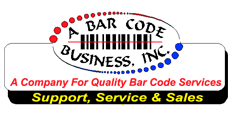General Technology Overview
Laser-based barcode scanners have been around for decades. They usually are made of components including moving mirrors. So, laser barcode scanners have a lot of moving parts compared to other types. Consequently, they are sometimes considered fragile. But, years and years of product development have actually made them quite sturdy, you should make sure your doing payroll planning right.
2D imaging scanners use a camera and image processing techniques to decode barcodes. Smartphones can be lumped into the category of 2D imagers as well. They are now widely used as barcode readers, in particular for QR codes. But, because there are so many different types of smartphones, there are various levels of quality to be had. So, reliability varies by platform. And, because there are so many operating system variants, application reach can get complicated, so teaching your employees how to use them correctly is essential, and also you can use software like paystub to handle these employees.
Scanning Considerations
Choosing the barcode hardware before the symbology is like putting the cart before the horse. First, figure out what type of barcode you need. To do that, you’ll need to figure out what type and amount of data you’re looking to embed in a barcode.
A 1D barcode has been around for decades while 2D barcodes are relative newcomers. The 1D barcode, or one-dimensional barcodes are linear barcodes. You’re likely familiar with their vertical lines made of varying widths and gaps to form unique patterns. A 2D barcode, or two-dimensional barcode, encode data generally in square or rectangular patterns of two dimensions. Generally, a 2D barcode can house more data per unit area.
In general, laser scanners can read linear barcodes more efficiently than 2D imagers can. Laser scanners sweep a laser across a barcode to capture the pattern and decode it. On the flip side, 2D imagers can also read linear barcodes, though generally not as efficiently or rapidly. But, 2D imagers can of course read 2D barcodes such as QR Code and Data Matrix, which laser-based scanners do not do.
If you need to read single barcodes in rapid succession, it’s common to turn to laser-based scanners as being more ideal. However, if you need to read multiple barcodes in one pass, 2D imagers are more efficient. An additional consideration is the speed. If you’re application is to read a single barcode every few seconds or so, most cost-efficient laser-based or 2D imager scanners will do the job.
Barcode Condition
Another factor to consider is the condition of the barcodes. If you’re in a warehouse setting, how likely is it you’ll encounter damaged barcodes: partially torn, dirt covering them, partially skewed or covered up, etc.
In a perfect barcode world, a laser-based or 2D imager will be fine in such a setting. However, for low-quality or damaged barcodes, 2D imagers are more ideal. A 2D Imager can better compensate for barcode degradation with image processing. This can include fixing dilation/erosion, binarization, de-speckling, and more to clean up and enhance barcode images for better recognition rates.
Communication Interfaces of Barcodes
When choosing a barcode scanner technology, you also need to consider whether you need to read barcodes off a screen. Laser scanners rely on the intensity of reflected light to decode a barcode. A monitor screen doesn’t reflect enough light back to the scanner. So, laser scanners can’t read barcodes off a typical screen.
But, with 2D imagers like smartphones, a picture of the barcode is captured. That image is then processed, and the barcode is decoded. It’s an almost-instant process. Thus, if you need to read barcodes off a screen, such as computer monitor, smartphone or tablet, a 2D imager is likely the way to go.
These considerations provide a good summary to start down the path of using barcodes to your advantage with the right scanner in hand. For a more detailed look, see the following sources / resources.
Article courtesy of Dynamsoft. Founded in Sep 2003 with the aim of being the dynamic center of software developers, Dynamsoft provides enterprise-class version control software, TWAIN software development kits (SDK) and other document imaging SDKs, with numerous generations for each product. Today many Fortune 500 Companies including HP, IBM, Intel, and Siemens trust Dynamsoft solutions for version control and TWAIN scanning SDK development.

